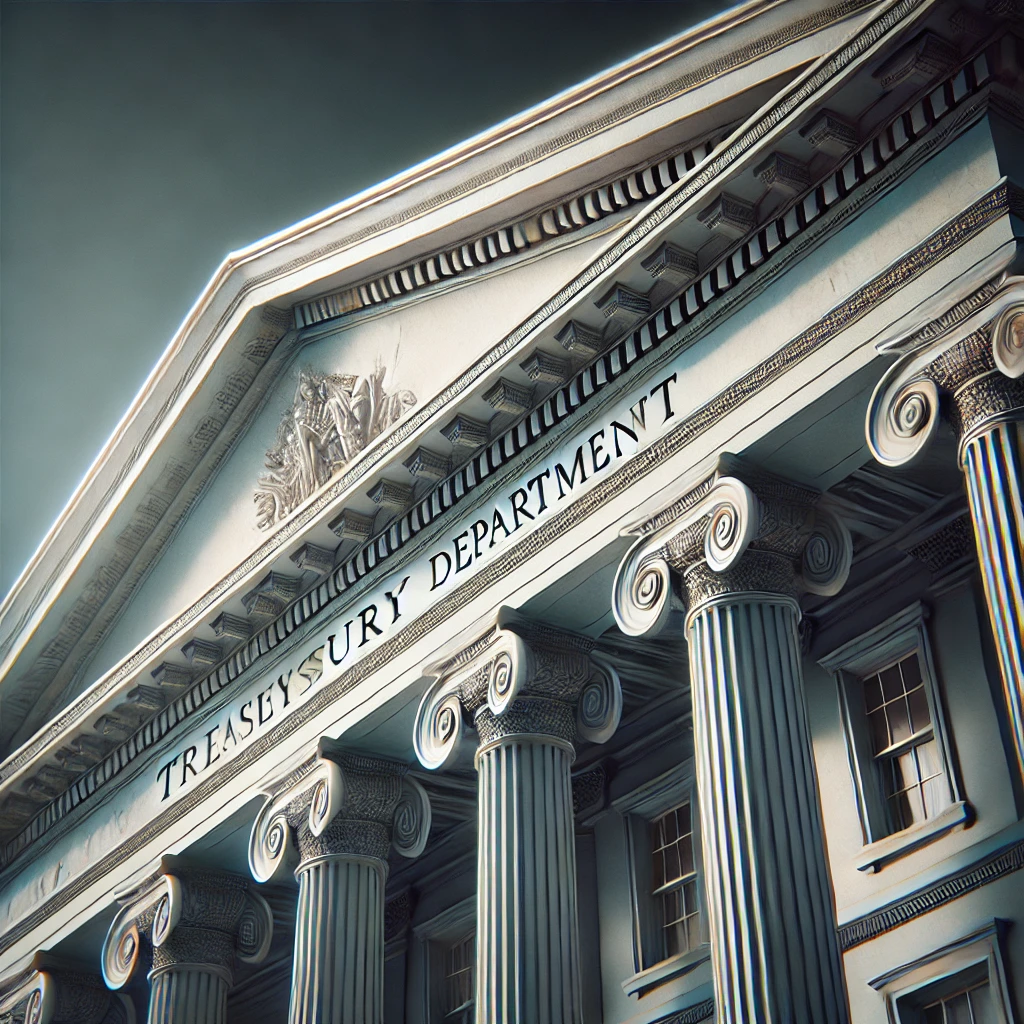
The U.S. Treasury market has long served as a bellwether for investor sentiment, economic outlook, and policy expectations in the United States. Following the recent U.S. presidential election, the Treasury market witnessed sharp post-election reactions, with an initial surge in yields reflecting a blend of optimism and caution among investors. However, these fluctuations began to moderate as the market reassessed the likely economic trajectory under the new administration. In particular, “Trump trades”—investments linked to policy expectations associated with Donald Trump’s economic approach—are being reevaluated. This comprehensive analysis delves into these shifts and what they may signify for the U.S. economy in 2024.
1. Treasury Yields and the Initial Post-Election Spike
U.S. Treasury yields, particularly those on 10-year notes, rose sharply in the immediate aftermath of the election. This spike was primarily driven by investors’ anticipation of potentially inflationary fiscal policies, including tax cuts, infrastructure spending, and trade restrictions, which had been hallmarks of Trump’s prior policy framework. These expectations created a wave of market activity as investors recalibrated their portfolios to brace for potential inflation.
Key Factors Behind the Initial Spike:
- Anticipated Fiscal Expansion: Investors initially responded to potential fiscal policies aimed at stimulating economic growth, which they perceived as potentially inflationary.
- Market Reactions to Tariff Expectations: Expectations of tariffs, similar to those imposed during Trump’s previous term, led to a belief that inflation could surge due to higher costs on imported goods.

2. ‘Trump Trades’ and Their Role in Market Dynamics
“Trump trades” is a term that encapsulates the economic expectations associated with policies Trump pursued, including deregulation, tax cuts, and tariff-driven trade strategies. These trades became popular among investors betting on growth-oriented, inflationary fiscal policies. For example, sectors like manufacturing and infrastructure saw increased interest due to Trump’s support for American industrial expansion.
Breakdown of ‘Trump Trades’ Components:
- Tax Reform and Deficit Concerns: The administration’s tax cuts fueled investor optimism about consumer spending and business investments, but also raised concerns about a ballooning fiscal deficit.
- Infrastructure Spending: Proposed infrastructure projects sparked interest in sectors like construction, materials, and manufacturing.
- Trade Restrictions: Tariffs were viewed as a double-edged sword, potentially fostering domestic industries but also increasing consumer costs.
However, as investors began to digest the feasibility of these policies in the current economic landscape, the initial enthusiasm surrounding “Trump trades” started to wane, resulting in a partial reversal of Treasury yield movements.
3. Stabilization of Treasury Yields Amid Market Reassessment
Following the post-election spike, Treasury yields began to stabilize as market participants reconsidered the long-term economic and fiscal outlook. Several factors contributed to this stabilization, including an assessment of the feasibility of the proposed policies and potential checks and balances within the legislative landscape.
Influences on Yield Stabilization:
- Legislative Hurdles: Investors began to factor in the complexities of passing extensive fiscal reforms, including potential opposition in Congress, which could stall or modify policy plans.
- Inflation Expectations Tempered: Although inflation was a significant concern initially, the stabilization of yields indicated that inflation expectations were moderating as policy clarity emerged.
- Federal Reserve’s Role: The Federal Reserve’s stance on interest rates and inflation control measures became increasingly important to investors as they gauged the Fed’s likely responses to fiscal expansion.
The Treasury yield correction underscores the market’s adaptability and highlights the importance of recalibrating expectations based on evolving policy and economic data.

4. Broader Economic Outlook for 2024: What’s Ahead?
The broader economic outlook for 2024 remains complex. Investors and analysts are watching key economic indicators and policy developments to gauge the likely trajectory of growth, inflation, and interest rates. The U.S. economy’s resilience or vulnerability in 2024 will largely hinge on the successful or delayed implementation of fiscal policies, monetary policies from the Federal Reserve, and the overall global economic environment.
Key Economic Indicators to Monitor:
- Gross Domestic Product (GDP) Growth: GDP is a fundamental indicator of economic health and will provide insights into the economy’s expansion under the new administration’s policies.
- Labor Market and Unemployment Rates: Employment data will play a crucial role in shaping the economic outlook, especially with an emphasis on job creation in sectors favored by “Trump trades.”
- Consumer Spending and Business Investment: These indicators reflect economic confidence and can be influenced by tax policy, interest rates, and wage growth.
In addition to these domestic factors, global events and trade dynamics will play an increasingly important role in shaping the economic landscape in 2024.
5. Investor Sentiment: Transitioning from Optimism to Caution
Initially, investor sentiment was marked by optimism regarding policies that could stimulate economic growth. However, as the post-election period progressed, a more cautious sentiment emerged, with investors balancing short-term enthusiasm against long-term fiscal and inflationary concerns. This cautious stance is reflected in the stabilization of Treasury yields and the tempered excitement around “Trump trades.”
Key Phases of Investor Sentiment:
- Phase 1 – Optimism: Investors initially responded positively to anticipated policies, particularly those expected to support growth sectors like infrastructure and manufacturing.
- Phase 2 – Reassessment: As market participants reassessed the feasibility and timing of these policies, cautious sentiment grew, leading to a stabilization of yields.
- Phase 3 – Caution and Diversification: With uncertainties about policy implementation, investors are increasingly cautious, opting to diversify portfolios to hedge against potential inflation and fiscal instability.
Investor sentiment serves as a critical barometer for market direction, and the transition from optimism to caution suggests that the market may experience further volatility as the year progresses.
6. Treasury Market Projections: Navigating 2024 with Policy Uncertainty
As 2024 unfolds, the Treasury market will continue to navigate policy uncertainty and fluctuating investor sentiment. Projections for the Treasury market point toward possible short-term fluctuations as investors react to new data and announcements from the Federal Reserve and the administration. Long-term trends will likely be shaped by inflation trajectories, deficit spending, and global economic influences.
Projections and Key Considerations:
- Interest Rate Trends: The Federal Reserve’s monetary policy, particularly its stance on interest rates, will play a central role in shaping Treasury yields.
- Global Economic Conditions: External factors, such as economic conditions in major trading partners and global trade policy shifts, will impact Treasury demand.
- Fiscal Policies and Deficit Spending: Policies with significant fiscal implications could lead to long-term Treasury yield increases if deficit spending remains unchecked.
Treasury market participants will need to remain agile, ready to adjust portfolios based on new information and developments that may affect the economic landscape.
7. Policy Implications for the U.S. Economy in 2024
The new administration’s policies could have far-reaching implications for the U.S. economy, particularly regarding fiscal stability, inflation management, and economic growth. Investors and policymakers alike are closely monitoring the likely impact of these policies on the national debt, Treasury yields, and broader economic health.
Policy Scenarios:
- Aggressive Fiscal Expansion: An ambitious fiscal policy could drive economic growth in the short term but may also lead to inflationary pressures and increased deficit spending.
- Balanced Approach: A balanced policy approach that focuses on sustainable growth while controlling deficits could provide a more stable economic environment for investors.
- Monetary Policy Adjustments: The Federal Reserve’s actions to counter inflation could involve interest rate hikes, which would influence Treasury yields and borrowing costs.
These policy scenarios highlight the complex balancing act that the administration faces as it seeks to implement its agenda while managing economic risks.
In conclusion, the recovery of U.S. Treasuries post-election reflects a significant recalibration in investor sentiment and policy expectations. While initial optimism surrounded the anticipated fiscal policies, a more nuanced perspective has emerged as investors assess the feasibility and potential impacts of these policies. This shift has led to the stabilization of Treasury yields, with investors adopting a cautious stance as they await further clarity on fiscal and monetary policy.
For the U.S. economy in 2024, the evolving Treasury market dynamics underscore the importance of adaptability in a landscape shaped by policy uncertainty, inflation risks, and global economic influences. As investors continue to monitor developments in the Treasury market and broader economy, maintaining a diversified portfolio and staying informed about economic indicators will be essential for navigating the year ahead.
Visit our other website: https://synergypublish.com


